During our short stay in Florida, we had all sorts of critters come to visit the backyard. There were many species of wild birds as well including eastern cottontails Sylvilagus floridanus. On a more interesting note, we spotted several species of snakes, the most fascinating being the black racer Coluber constrictor priapus and a couple of eastern diamondback rattlesnakes Crotalus adamanteu. Frequent visitors included the gopher tortoise Gopherus polyphemus and two bobcats Lynx rufus. We had also set up a trail camera in one of the trees and we had caught an image of an armadillo Cingulata and some sort of an animal that we never identified, but it sort of looked like a raccoon. A more commonly known visitor in the area and familiar species to us from being up North was the white-tailed deer Odocoileus virginianus. There were about three of these deer that would show up on a regular basis in the backyard.
We lived in a typical neighborhood of row houses and I wonder how many of these animals are able to thrive with their natural environments disappearing. The only one of the bunch that had lucked out so far, was the gopher tortoise. It lived on an empty lot across the street from us. This species of tortoise is protected and as long as it stays there, the empty lot won’t be able to be developed.
Here are just a few photographs of the white-tailed deer that came to the backyard.
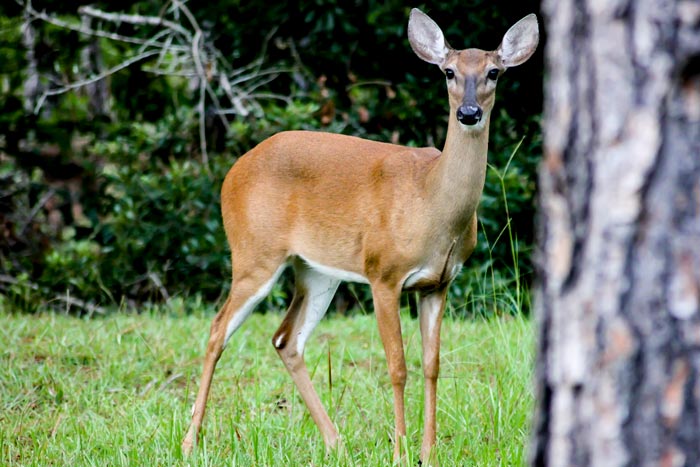
The white-tailed deer is also known as the whitetail or Virginia deer.

The white-tailed deer is in the family Cervidae, which is the deer family, and the order Artiodactyla, which consists of hoofed animals with an even number of toes.
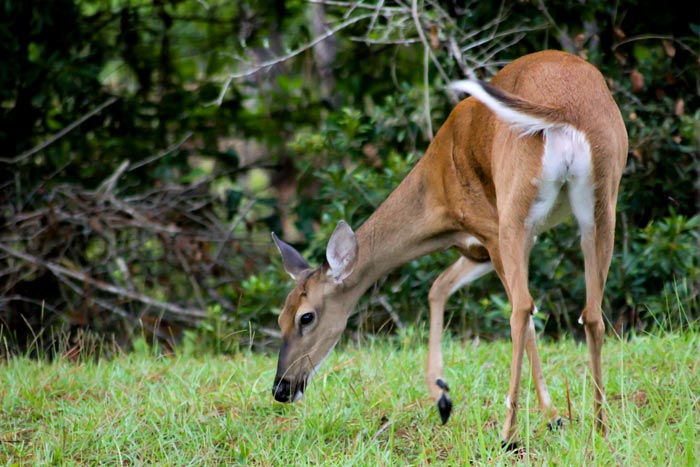
There are two main deer species in North America, The white-tailed deer and the mule deer Odocoileus virginianus. Within the species of mule deer, is the subspecies called the black-tailed deer.
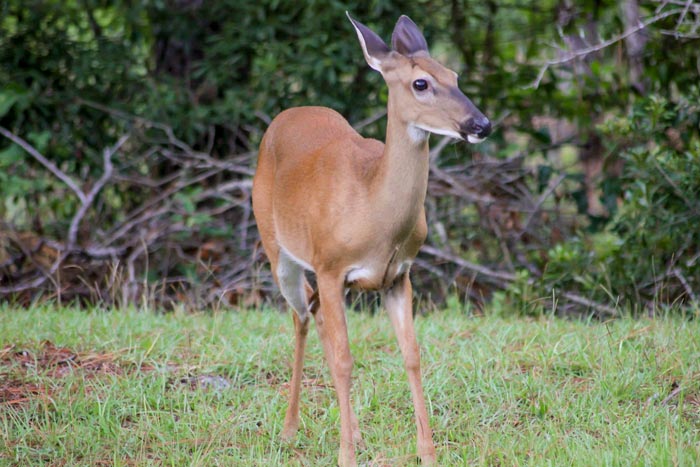
In North America, the white-tailed deer is a widely distributed ungulate (hoofed animal) east of the Rocky Mountains.
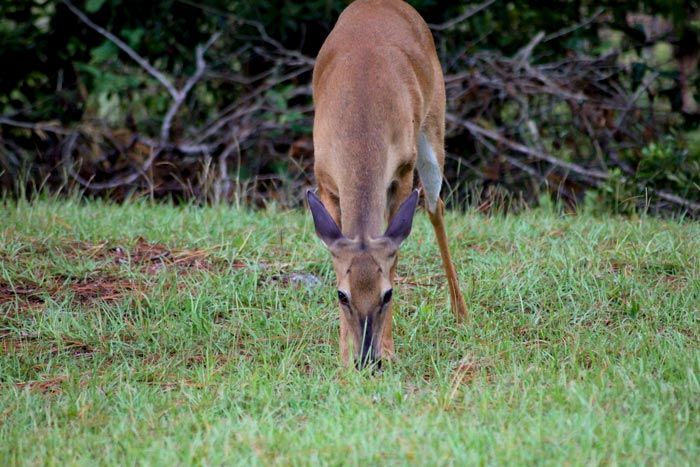
The white-tailed deer can measure 3 to 3.5 feet high at shoulder length and weigh from 50 to 400 pounds. They molt twice a year and their coats are reddish-brown in the spring and summer and turn to a grey-brown throughout the fall and winter. Fawns molt slightly later than adults during the fall when they lose their spotted coats. The White-tailed deer can also be recognized by its white underside to its tail. Female deer are called does, males are bucks, and newborns are called fawns. Bucks shed their antlers each year during the late winter after the mating season is over. Their antlers will grow back usually around April.
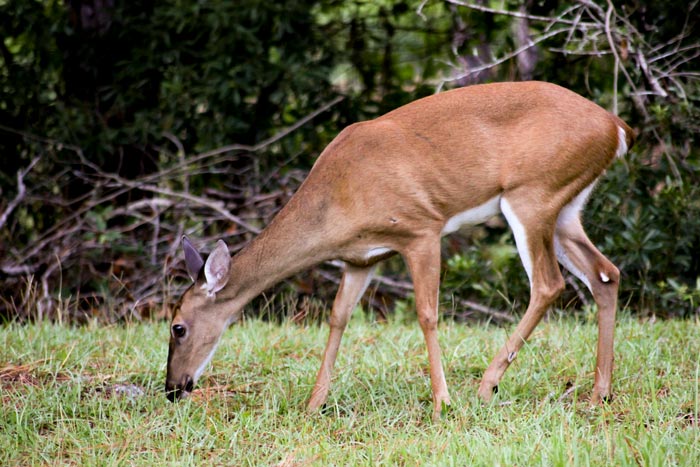
White-tailed deer are mostly herbivores and eat large quantities of vegetation at dusk and dawn. Their diets will vary according to the season and food availability. During the summer they will feed on grasses, leaves, weeds, wildflowers, shrubs, vines, and trees. In the fall, deer will take advantage of the abundance of fruits and nuts, such as apples and acorns. The winter is the most difficult time for deer and they will mostly feed on the twigs and bark of woody plants like maple and oak and evergreens, such as cedar, hemlock, and pine.

The white-tailed deer is a ruminant, which means it has a four-chambered stomach. The stomach is divided into four chambers, called the rumen, reticulum, omasum, and abomasum. Each chamber has a different and specific function and this type of digestive system allows the deer to gather and chew their food very quickly and seek cover as soon as possible. The deer then regurgitate their food into their mouths a small amount at a time and rechew it. This practice is known as chewing their cuds. This behavior minimizes their exposure to predation.
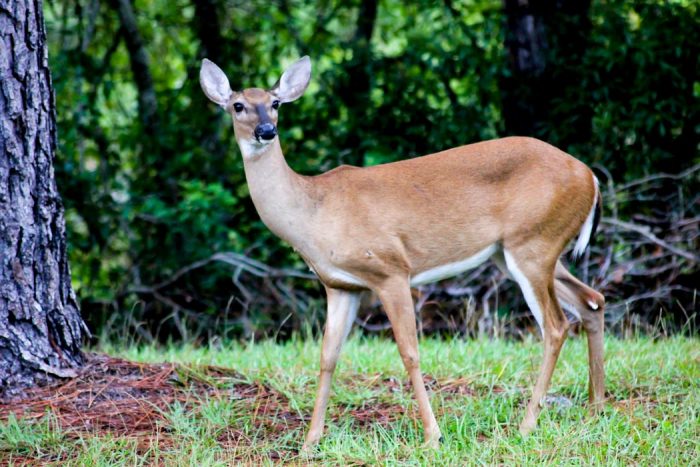
There are several natural predators of the White-tailed deer including, coyotes Canis latrans, wolves Canis lupus, bears Ursidae, jaguars Panthera onca, cougars Puma concolor, American alligators Alligator mississippiensis and humans Homo sapiens.
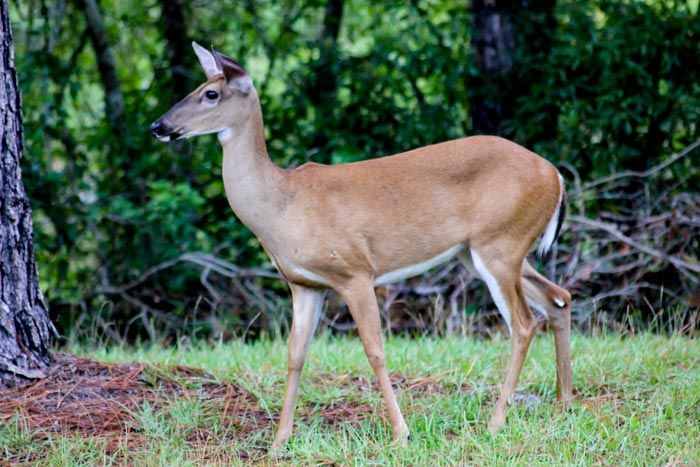
White-tailed deer are very nervous and shy by nature and will wave their tails from side to side when they are startled and fleeing. They will typically respond to the presence of potential predators by breathing very heavily and fleeing from danger.
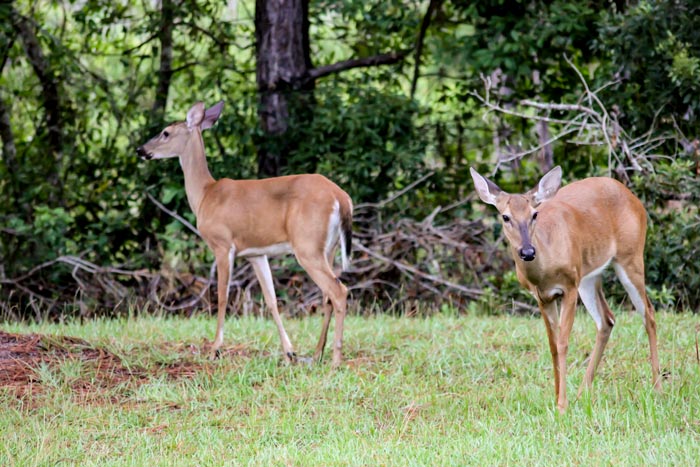
Adult bucks and does generally lead separate lives throughout the year. In September, bucks begin to establish dominance hierarchies so that they can mate with does when they are in estrus. For the rest of the year, bucks will live in small groups with other bucks, and does will live in small groups with other does, yearlings, and fawns.
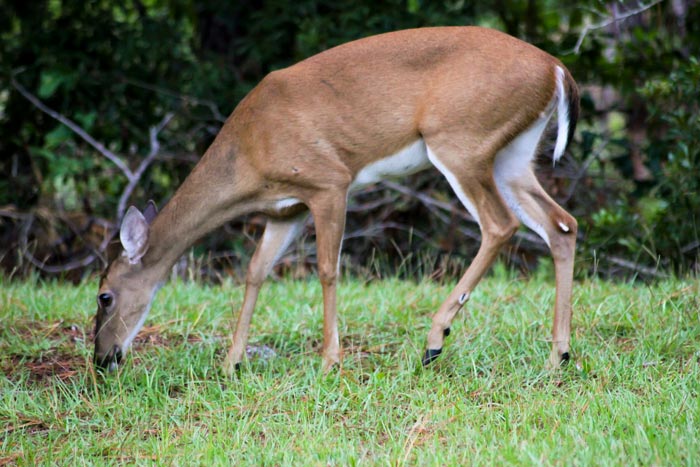
The white-tailed deer mating season can occur from October through January and in the north, mostly in November. Gestation takes about 200 days and a doe’s first birth usually produces a single fawn and successive years twins and occasionally triplets.
Leave a Reply